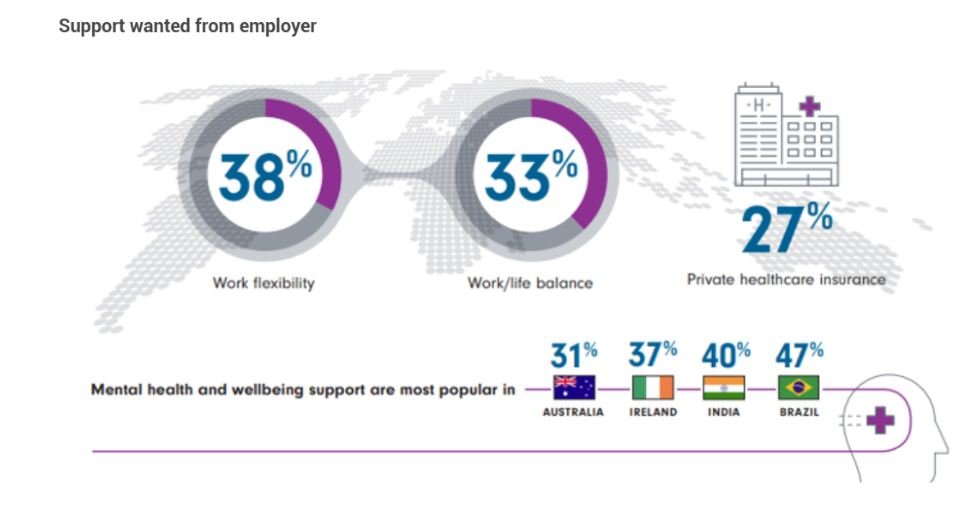
Work Environment
Remote Working - despite rapid adaption current challenges remain
Remote working and hybrid working arrangements feature as a top priority for employers with 46% of employers selecting this as a key current priority. But remote working becomes a less common priority when considering near future priorities.
Challenges include ways of working now and in the future
Employers may see the remote issue moving into the declining stage for significant reason; fostering a virtual environment is incredibly challenging.
Source: The Fidelity Global Employer Survey, 2022. Respondents were asked: When it comes to the current working environment, to what degree has your company found it challenging to do each of the following? Base: Total Respondents (1000). NOTE: The total percentages shown may not equal 100% due to rounding.
Remote working is a key challenge to workplace culture
Additionally, employers are finding maintaining culture with remote work and responding to employee resistance to be the most challenging areas.
Source: The Fidelity Global Employer Survey, 2022. Respondents were asked: When it comes to workplace culture, to what degree has your company found it challenging to do each of the following? Base: Total Respondents (1000). NOTE: The total percentages shown may not equal 100% due to rounding
But flexibility may help retention
When looking at actions that impacted retention, we found that 41% of US based companies and 44% of Non-US companies said that they had taken action on flexibility to improve retention. In the US this effort had an impact on retention with 63% saying this action has positively impacted retention.
To compare with the 2021 Fidelity Global Sentiment Survey our research indicated 38% of employees want support on flexible working from their employer and 33% want support on work/life balance. Such flexibility may include remote working as well as other aspects of flexibility such as working arrangements, flexibility of reward programmes etc.

The Global Employer Survey


